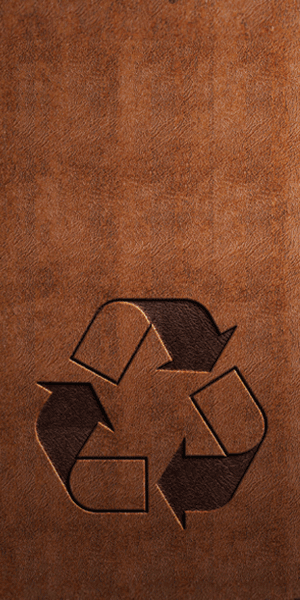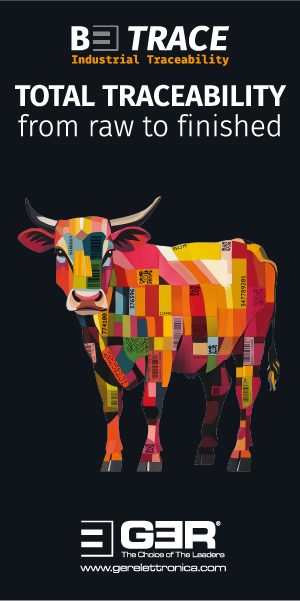Market Intelligence—09.04.24
Macroeconomics
With so many military disputes, sadly, taking place at the moment, many other developments and events seem to be fading into the background.
Tensions in the Middle East are clearly being reflected in oil prices. The price of a barrel of oil has risen by over $10 in recent weeks, making energy costs significantly more expensive again. Although the stock markets are weaker and the second quarter began with notable losses, particularly on the US stock exchange, this has so far been more of a correction than a significant slump.
The labour market in the US has remained very stable and with over 300,000 new jobs created. Surprisingly, even the tight labour market in the US cannot dampen hopes of interest-rate cuts. However, the question is what one wants to see as a yardstick for this. The stock markets reacted with declines, but at the same time the US dollar can hardly benefit from the situation. After a brief rise to almost $1.07 against the euro, it very quickly fell back to levels of over $1.08 and was unable to benefit from the positive labour market data.
Global tensions are also reflected in the price of gold. In anticipation of falling interest rates, there is little else to explain why gold has seen such significant price increases. At the end of last week, the price of an ounce of gold was hovering at around $2,300, which in turn meant new record highs. It is clear that the triangle of share prices, currency and gold does not have a coherent correlation at present.
However, we are also in an extremely uncertain geopolitical phase and this is resulting in market situations that are sometimes not rationally explainable.
Leather Pipeline
We have already mentioned several times that, with the start of the second quarter, we are now in one of the quieter phases along the leather pipeline. It is always surprising that, starting from the raw materials market, the basic mood always changes suddenly from almost one week to the next, although neither the rhythms nor the cycles nor the facts change quickly and surprisingly. It is actually the same every year, unless you are confronted with surprising events such as pandemics or wars.
If you follow the developments this year, you cannot overlook the recurring situation. However, the facts in the past quarter were not as positive as the mood at the end of the quarter and, above all, at the trade fair in Hong Kong would have us believe. Nevertheless, based on the raw material suppliers, many were prepared to see a positive outlook for the coming quarters. As is so often the case, it is not usually based on convincing arguments, but rather on the principle of hope. In the meantime, however, tempers have cooled considerably and people are beginning to take a more realistic view of the situation again.
Let us take a look at the various sectors and try to get a realistic picture of the current situation in the leather industry over the next few months. We can probably skip the geographical analysis at this point as we have reported sufficiently on the problems in the European leather industry in previous issues. These are of a structural nature and therefore not necessarily a representative reflection of the overall environment in the leather industry.
Let us start with the footwear industry, which perhaps is receiving too little attention at the moment. Major changes in the industry have certainly taken place in recent years and we are not currently seeing any really new trends that could fundamentally change the situation regarding the footwear sector’s use of leather. The ongoing trend of substituting leather, riding the vegan wave and using more and more plastic, has at least been halted, at least from our point of view.
The retro wave in the sneaker sector, which is currently sweeping through the consumer goods markets, based on adidas models, may not be a game-changer, but it has certainly brought the shrinking process in the use of leather as a material in the footwear sector to a halt for the time being. The comfort shoe and sneaker sector is now so dominant in terms of volume that only fundamental changes in this area could actually influence the leather market and demand.
We have not noticed a real renaissance of the classic street shoe, even if the negative trend here also appears to have been halted, at least from our perspective. According to our perception and assessment, the shoe sector currently shows the greatest stability in the demand for leather. We would even go so far as to say that the global market as a whole is probably even showing a slight improvement and a measurable increase in the proportion of leather.
The next few months will show which fashion trends will prevail and how the labels and shoe manufacturers will deal with them. It should also be noted here once again that the so-called and media ‘anti-leather’ trend for so-called climate protection and animal welfare reasons continues to be more of a European issue, and possibly to a lesser degree a North American one. Other markets that clearly represent a much larger number of consumers do not follow these ideas.
Fashion and price still play the most important role and things are not looking too bad for leather at the moment.
If we look at the furniture sector, we can see that we are now entering a quieter season in the northern hemisphere. In recent months, there have been repeated reports of good business and high activity in furniture leather production in China. Even if the activity actually gave the impression that there was good demand and high production in this sector, there were always doubts. Consumer sentiment in China was weak, the property sector is going through a deep crisis. Positive export business to Europe and the US could not really be explained either.
In this respect, there have been major question marks behind the relatively extensive commodity purchases and the news for some time now. In the meantime, there are signs that production in China has actually been inflated rather than witness a significant improvement in demand for finished products. In the meantime, it is also becoming apparent that people are more concerned with the realities and the seasonal slowdown than having very high positive expectations for the coming months. We do not need to say anything more about Europe in this sector at the moment. With the exception of high-end and speciality interiors, the furniture sector in Europe remains a real problem. This is unlikely to change before the summer and only after the summer holidays will it be possible to know if, after several seasons, there may be a certain revival in this sector among consumers.
A similar situation can also be explained by the automotive sector. The transition from combustion engines to electromobility is still very bumpy. The sales figures for electric vehicles in Europe are far lower than expected by governments. Too many things are still unclear. The charging structure, the question of costs over the entire period of use, the resale value and much more. These are very important factors for normal families and play a crucial role in the family budget. This summer, there will again be many model changes and the proportion of electric vehicles on offer will increase significantly. However, this does not mean that these vehicles will actually be accepted and purchased by the market. At present, everything points to a continuation and intensification of the price war and it is certain that a large proportion of the new manufacturers will not survive the next few years.
The key question that remains, however, is what the interior design will look like in the next few years and what decisions will actually be made by the manufacturers and, by extension, by the buyers in terms of materials. Here too, the trend against leather, which was considered almost irreversible a few years ago, has not materialised to the extent suggested by European brands in particular. Leather is still a widely used material, particularly for higher-value vehicles and in cars for the markets in the Middle East, the Far East and in the Americas.
In China, the new manufacturers have tried to use the image of leather in the interior as a selling point for their vehicles. In our view, however, this demand is unlikely to be sustainable. The quantity of leather used by the currently dominant vehicle manufacturers will clearly not increase in the coming years. This is particularly true of the European brands, which are not only withdrawing from the lower-priced market segments, but are no longer focusing on leather in their interiors, except in the luxury segment. However, they will not give up. If you then consider the sales figures and the models that currently determine volume production, and add to this the aggressive marketing of Chinese brands worldwide, then maintaining the current volumes of leather in the automotive sector would probably already qualify as a success. It should also be borne in mind that in the event of massive price wars, leather will probably be dispensed with in the volume sector for cost reasons alone.
Now let us consider the leathergoods and luxury sector. There are signs of major changes here. It is possible that we are already in the midst of a new movement. Anyone who has followed reports in the media in recent weeks and months will have realised that the uniform success story for luxury products is no longer holding true. Many major names have already had to report significant declines in sales and the rumour mill is churning when it comes to the question of how large the stocks of unsold products of individual manufacturers are. We keep hearing that additional storage space is already being rented to store unsold buffer stocks; what will happen to these products in the end is not clear.
It is important to realise that the usual sales-promotion measures of the retail trade (commonly known as discounts) can hardly be used in the luxury sector, and there are hardly any other stimulants in this sector for models that are already on the market. In the meantime, there are already individual brands that are discussing the unimaginable as an option or are already implementing it. After the massive price increases, especially for bags, the market of those who are willing and able to pay the higher prices seems to be declining significantly. We should also bear in mind that although the market in Russia is still supplied with all luxury goods through grey imports, the numbers of buyers are no longer available in the same form as before. The Chinese middle class is no longer so easy to lure with luxury goods either.
The answer that many brands are now coming up with is to extend the range downwards again in terms of price and to generate a new entry-level class of product. On the other side of luxury marketing is the expansion of exclusive retail. For some time now, luxury brands have been buying up top properties in the iconic shopping streets of Milan and Paris. Given the sums they are spending on this, it must be assumed that even more exclusive shopping experiences are planned for a clientele that would be prepared to pay even higher prices for luxury goods under certain conditions. Whether this or any strategy will be successful may only become clear in a few years’ time.
At the moment, luxury brands are being forced to think about products that are currently not being sold and at the same time they are forced to keep supplying their customers and the markets with new models and fashions to keep the excitement alive. As a result, demand for materials is not dwindling at the moment, nor is production falling massively.
However, if this sector continues to slow down, the markets will have to adjust to a significant change in market developments. However, owing to the financial strength of those involved and their very long-term thinking, a quick and sudden reaction is unlikely.
All in all, we do not expect the markets to pick up in the coming months. We believe that both the geopolitical situation and seasonal factors suggest subdued production and market development until the autumn. Suppliers of raw materials in particular will have to continue to focus on liquid sales of their goods.
Over the past few months, we believe we have observed that some processors may have ordered in excess of their actual requirements. This certainly does not apply to all of them, but overall it would not be surprising if there were a noticeable, temporary decline in the procurement of raw materials. Whether the strategy of the major meat producers between the actual market situation and their behaviour can be maintained in the coming months is probably one of the most important questions along the leather pipeline. If this is not the case, further large shares of the raw material supply will have to be placed outside the leather pipeline.
All in all, the split market has calmed down somewhat. On the one hand, demand for splits for the leather industry has improved significantly in recent weeks and months but, on the other hand, the pressure on the collagen and gelatine market has eased somewhat at the moment. The significantly lower production in tanneries in Europe has led to a correspondingly reduced supply of lime splits, so that some producers have had to raise their purchase prices again in order to supply production. However, whether the entire capacity in central Europe can be maintained in the long term is also a question that the industries are currently looking at closely.
When it comes to sheepskins, there is always hope of a return to fashion for leather garments. There are repeated indications of this, and leather has been playing a very important role among top designers again recently. However, the big leap into mass production is not really happening, although at the moment large mass retailers are repeatedly showing leather collections in their programmes. Here too, the extremely low price at which leather clothing can be produced today is probably an invitation to replace the widespread plastic substitute with the original. Here, too, it is true that leather garments do not play a particularly important role in the retail sector during the summer period and here, too, the collections and the ranges on offer after the summer will set the direction for the coming year.
For the next few weeks we should be in a very quiet phase. From what we can see today, and as a conclusion to what we have previously tried to report, there are no signs at the moment that suggest a sudden new dynamic along the leather pipeline. The companies that operate successfully in the market with their articles will probably be able to benefit from continued relatively low raw material prices. The others will probably find it very difficult, as we cannot see any growth opportunities at the moment for those who urgently need new orders.












